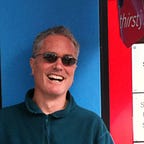The Fundamentals
You measure the quality of life of a country or a city by the extent to which access to decent healthcare, justice, education, and housing is available regardless of economic circumstances, class, race, ethnicity, gender, religion, disability, age, employment status, etc.; on how safe and inclusive the public spaces are; on how free you feel to speak out in public on topics that might trouble powerful government, corporate, and individual interests; and on how sustainable the environment and economy are. Well, those are some of the important things, anyway.
You don’t measure it by the number of hipster cafes catering to the latest food fad, or by the availability of obscure and expensive second-world coffees (that game of one-upmanship for jaded first world palates), or by the number of overpriced gourmet food trucks, or the number of man buns per square mile, or by how easy it is to get artisanal goat cheese or cutesily-named microbrew beers, or by the ubiquity of carefully-renovated lifestyle lofts promising “authentic” boho surroundings, or by the presence of Tiny Houses as lifestyle accessories, or by the number of shops selling hookahs and vaping gear to affected-looking white guys with beards and thick-rimmed glasses. Or even by the over-use of the adjective “edgy” for anything that tries not to look like it was spawned in the suburbs.
Those are not even symptoms of a good quality of life.
Here are some real symptoms: the absence of people needing to sleep rough in the entrances to those hipster cafes; the relative closeness of mean, modal, and median incomes; good hospitals, clinics, schools, and public transport used voluntarily and extensively by both rich and poor alike; good neighborhood medical practices that everyone can afford to visit when they need to; the availability of clean, convenient public toilets; bustling public markets and streets where you can stroll or interact with different people without feeling threatened; the distance you can go in an urban area without seeing a homeless camp (about 50 yards, at least where I live); playgrounds that aren’t covered in shit and graffiti; neighbourhood residents unselfconsciously sharing jokes with local police officers; a sustainable economy and environment; well-maintained physical infrastructure; the absence of people needing to use stolen hipster cafe coffee mugs to beg on the streets; decent convenient housing that a person on low-to-average income can afford; etc. You know, all that.
Call me a fundamentalist if you like, but I get depressed when boosters in places like Oakland point to the latest artisanal coffee shop opening, or a nascent Tiny House movement, or a massively-hyped new hipster cafe, or a burgeoning food truck scene, and think that they’re showing the world the way forward (or how nice a place it is to live). Dear god, how many Blue Bottles or hipster food trucks or nice sub-Banksy street murals does it take to distract you from the homeless camps and the beggars, the garbage and junk in front of broken schools, the flatland shootings, the graffitied-over playgrounds, the social cleansing, the old women stealing recyclables from trash cans just to survive, and the broken-down homeless RVs parked on the streets?
